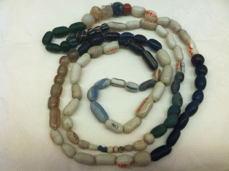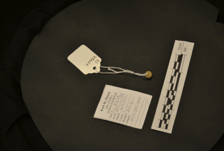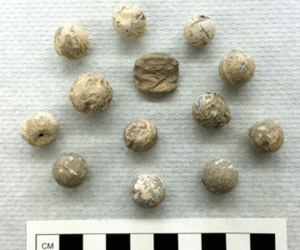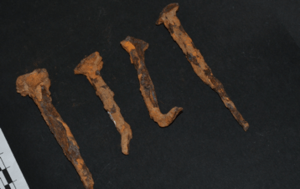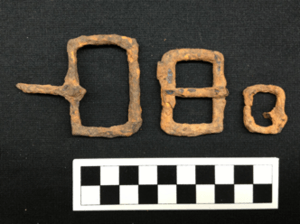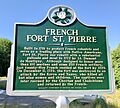Fort St. Pierre Site facts for kids
|
Fort St. Pierre Site
|
|
| Nearest city | Vicksburg, Mississippi |
|---|---|
| Built | 1719 |
| NRHP reference No. | 00000263 |
Quick facts for kids Significant dates |
|
| Added to NRHP | February 16, 2000 |
| Designated NHL | February 16, 2000 |
Fort St. Pierre was an old French fort built on the Yazoo River in what is now Warren County, Mississippi. It was also called Fort St. Claude or the Yazoo Post. The French built it in 1719. It was their northernmost outpost in French Louisiana.
Native Americans destroyed the fort in 1729, and it was never rebuilt. In the 1970s, archaeologists found its location north of Vicksburg. The site was recognized as a National Historic Landmark in 2000.
Contents
The Story of Fort St. Pierre
French Louisiana was a large area claimed by France in North America. It started in 1699, and the big city of New Orleans was founded in 1718. French explorers first visited the Yazoo River valley between 1698 and 1706. During this time, French missionaries also worked there.
However, English traders from the Province of Carolina were already working with the Chickasaw people in northern Mississippi. They were also making friends with the Natchez people further south. The French missionaries stopped their work after one of them was killed by the Natchez.
France couldn't support its colony much during a big war called the War of the Spanish Succession (1702-1713). After the war, France wanted to expand its territory. So, in 1719, they built Fort St. Pierre. It was meant to be a northern outpost between the Native American groups. The fort's goal was to stop the English from trading too much and to help France grow its own influence.
Fort St. Pierre was a strong fort with a tall wooden fence, called a palisade. It also had a ditch, or moat, around it. But on December 11, 1729, the Natchez people launched a surprise attack. Their leaders had become angry with the French moving onto their land. The Natchez destroyed the fort, and it was never rebuilt.
Archaeologists didn't pay much attention to the Yazoo Bluffs area, where the fort was, until the 1970s. In 1974, a survey found the fort's exact spot. From 1975 to 1977, a big excavation took place. They found parts of the palisade, one of the fort's towers, and other important features. What was special was that archaeologists found proof that the people at the fort made their own lead shot. They used a wooden tower to do this. Because Fort St. Pierre was only used for a short time, it helped archaeologists learn more about other older colonial sites.
Native American Groups and Their Pottery
The land around Fort St. Pierre was home to three Native American groups: the Yazoo, Koroa, and Ofogoula. These groups were friendly with the English and the Chickasaw tribe. This was a problem for the French.
Two of these groups, the Yazoo and Koroa, played a big part in the fort's destruction. In December 1729, they attacked the fort and killed most of the people living there. The third tribe, the Ofogoula, had moved away before the attack. After the fort fell, the Yazoo and Koroa left. But they kept fighting against the French and any tribes allied with them.
Archaeologists found many Native American pottery pieces at the Fort St. Pierre site. About 43% of all the artifacts found were Native ceramic fragments. These common items, like pottery, show us what was important to the Native people and how they lived. Pots and bowls were essential for cooking, preparing, serving, and storing food. Native women were usually the ones who made these clay pots.
Life at the Fort: Food and Supplies
Fort St. Pierre was a French fort that got its supplies and new soldiers by land. Boats on the Yazoo River were rarely used for this. The soldiers got most of their food and water from the land around the fort. They would farm their own food and get water from the Yazoo River. Any other supplies or trade usually came by land. Life at the fort was simple but often boring. Soldiers mostly kept watch, farmed, and took care of the land.
Soldiers' Daily Lives
We don't have many records about the soldiers' daily lives. But from a few journal entries, we know some things. Soldiers went to the chapel to pray twice a day as part of their duty. They also had their own small piece of land to plant whatever they wanted. This was one way they spent their free time.
Other fun activities included drawing, writing, reading, or spending time with their friends. Daily life at the fort was usually peaceful and happy, but it could also be very boring. Soldiers often had duties like military drills and exercises to keep them busy. One challenge they faced was a shortage of food and a drought during one summer. They traded with the local Native American tribes, which helped them get what they needed.
Cool Finds from the Fort St. Pierre Dig
Archaeologists found many interesting items at the Fort St. Pierre site. These artifacts tell us about the lives of the French soldiers and the Native Americans who lived there.
Trade: Glass Beads
Glass beads were made by pulling hot glass into long tubes. This method started in ancient Rome and was later used in places like Italy and France. These beads were then shipped to North America to be traded. The beads found at Fort St. Pierre likely came from Venice, Italy. Venetian craftspeople were very skilled at making these beads.
Beads were also made in Paris and London. European explorers brought these beads to the Americas in the early 1500s. Native Americans quickly started using these beads in their own trade and for decoration. This is how the beads ended up at the fort in Mississippi.
Dishes: Pottery and Ceramics
Many pieces of pottery and ceramics were found at the Fort St. Pierre site. A lot of these were fragments of French Faience. Faience is a type of pottery with a shiny, tin-based glaze. It was inspired by beautiful Chinese porcelain.
At the time, Faience was quite valuable. However, many pieces found at Fort St. Pierre were "rejects" or mistakes that were sold cheaply to colonists. Much of this pottery was broken into pieces, probably when the fort was destroyed in 1729. Most of the Faience at the fort was used for everyday things, like drinking cups and plates.
Big Guns: Swivel Guns
Swivel guns are smaller cannons often used on ships. They can spin around on a special stand to fire in different directions. It's likely that Fort St. Pierre had swivel guns, but we don't know for sure. The only clues found were ammunition pieces. These were too big for regular rifles but too small for large cannons.
Archaeologists also found an iron casting that looks like an old iron lantern. Both these items were found near the river side of the fort and close to each other. This suggests that swivel guns might have been there. It's possible that if swivel guns were present, they were either taken by the attacking Native Americans or removed by the French before the fort was destroyed.
Prayer Items: Rosary Beads
Some of the beads found at the fort might have been part of a rosary, which is used for prayer. However, they were most likely glass beads meant for trade. We know beads are from a rosary if they are found linked together by metal loops. Rosaries have been found at other old colonial sites.
So, where are the rosaries at Fort St. Pierre? If they existed, they were probably stolen. French witnesses wrote that religious items were taken from the Jesuit priest at the fort. Later, Catholic officials paid money to Native American groups to get church items back. But rosaries were not listed among the items that were returned.
Bullets: Musketballs and Lead Shot
Musketballs were found inside the fort's buildings, fences, trenches, and moat. These round bullets, made of iron or lead, were used for trading and as weapons. Musketballs are usually the most common items found at old frontier sites. But only a small number were found at Fort St. Pierre. The most likely reason for this is that they were stolen after the 1729 attack.
The size of the shot varied. Smaller "bird shot" and "buck shot" were used for hunting birds and game. Larger musketballs were used for trading and fighting. Soldiers had to leave a little space between the musketball and the gun barrel. This was to allow for gunpowder buildup after each shot.
Archaeologists found a place where lead shot was made. This shows that French soldiers at Fort St. Pierre made their own small shot. They might have made musketballs too, as firearms and bullets were very important in the colonies. The French colonists usually had enough lead shot and gunpowder. More of these goods were sent to Louisiana over time. Soldiers sometimes had to guess which size shot would fit their guns. They even used knives or their teeth to fix balls that didn't fit well.
Tools: Knives
Knives were very simple tools, but they were essential for the French colonists to survive in the New World. Knives were important for hunting, cooking, and trading. They were especially valuable for trading with Native Americans.
When the French first arrived, it was important to build good relationships with the Native people. If they didn't, they might not survive. Pierre Le Moyne d’Iberville, a French explorer, knew how important it was to get along with Native Americans. When he first arrived, he left two axes, four knives, and some red paint for two Native Americans who were watching them. This showed his good intentions.
This started a system where Native Americans became dependent on Europeans for certain goods. Since Native Americans couldn't make iron and steel tools like knives, they needed to trade for them. Knives became some of the most popular trade items in North America. The first known European item given to a Native American in Louisiana was a knife. It was given to a Natchez chief in 1682. Simple folding knives and "case knives" (often sold in boxes) were the most common types traded. Their simple design made them easy to mass-produce.
Building Blocks: Nails
One of the most common items found at the French colonial site of Fort St. Pierre were hand-wrought nails. Different types of nails were found, like the "Rose Head," "L" Head, "T" Head, and small tacks.
These different nails had different uses. For example, the Rose Head nail was often used for practical building. The "L" Head nail was more commonly used for furniture. By studying these nails, we can learn more about how they were used in this French colonial fort.
Fasteners: Buckles
Buckles are commonly found at Fort St. Pierre and other forts. Soldiers used buckles for many things. They kept clothes tight, fastened straps and harnesses on weapons and backpacks, and were also used as stylish parts of their uniforms.
Because they had so many uses, buckles from Fort St. Pierre's time came in many shapes and sizes. Some were larger and fancy, while others were simpler and used more for their purpose than for looks. Since the fort was a soldier base, most of the buckles found are plain. Their usefulness was more important than their beauty.
Weapons: Muskets
The 1716 and 1729-1734 model marine muskets were common among French soldiers. The men at Fort St. Pierre likely carried these. While soldiers were probably the only ones with firearms inside the fort, similar weapons were widely used in North America in the 1700s. For example, a smoothbore, flintlock hunting gun called the "Fusil de chasse" was made in France. Local soldiers and Native American groups used these muskets because they were light and well-made.
When the excavation happened, archaeologists expected to find many rifles at the fort. However, compared to most other forts, very few muskets were found. It's possible that the fort was looted after the attack. The missing muskets might be found in areas around Fort St. Pierre.
Gaming Pieces: Jetons
Among the artifacts found were jetons. These were coin-like pieces, usually made of copper or other less valuable metals. Even though they were very worn, these jetons gave clues about the soldiers' daily lives.
Jetons usually had little to no money value outside of French colonies. They were mostly used for games or betting, much like modern poker chips. This also suggests that soldiers might have played games with Native Americans in the area. It's known that Native Americans also gambled in similar ways, with horse races and card games.
What Happened After the Fort's Destruction?
After the Natchez people attacked and destroyed Fort St. Pierre in 1729, the fort was left empty and never rebuilt. This lasted for over 100 years. However, the land was used again during the American Civil War. It became a camp for soldiers for about 18 months between 1862 and 1863. Some of the artifacts found during the excavation might even be from this later Civil War period.
Researchers Ian W. Brown and Bill Wright believe some artifacts likely came from the 1862-1863 period. These include a light blue glass container, pieces of leather that were probably part of a shoe heel, a brass button with an eagle, and a brass gun plate with a design stamped on it.
Images for kids




